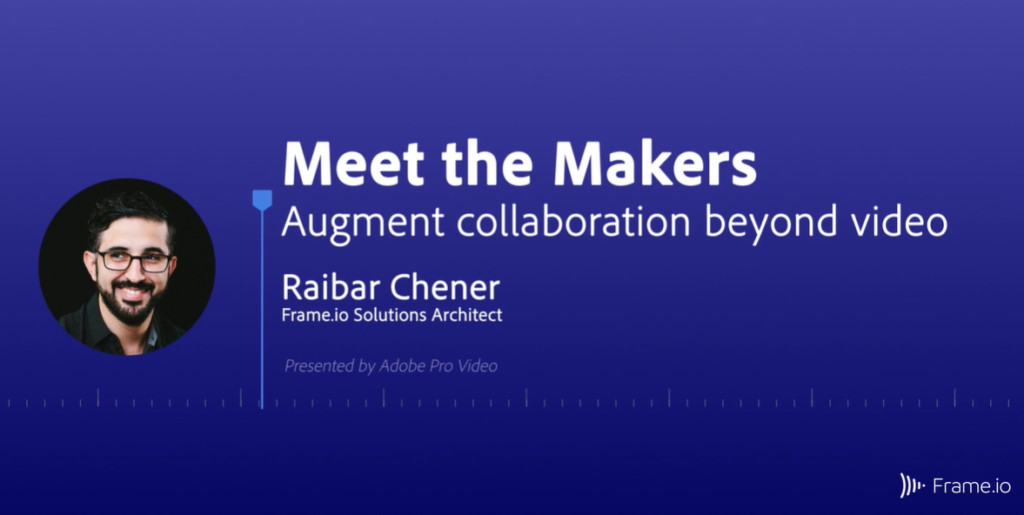M+E Connections

Adobe: How Frame.io Helps Companies Collaborate Using Video and Beyond
Story Highlights
Adobe’s Frame.io cloud-based collaboration platform has become critical to any video review process – and that includes creative assets beyond just video files, according to Raibar Chener, Frame.io solutions architect at Adobe.
“We accept all file types [so] you can put anything inside of Frame.io,” including colors, fonts, icons, logos and video guidelines, he said Aug. 16 during the “Augment collaboration beyond video” webinar, part of the “Adobe Pro Video: Meet the Makers” series.
During the session, he discussed how to centralize assets for video projects and expand an organization’s practice to include casting, location scouting, scripts, shot lists, storyboards and more.
Adobe acquired cloud video collaboration platform Frame.io in 2021. At the time, Shantanu Narayen, Adobe CEO, chairman and president, said it would help Adobe reach new customers.
“The addition of Frame.io creates an opportunity for Adobe, in conjunction with the partner ecosystem, to expand beyond video editors to a broader set of customers, teams and enterprises,” Narayen said Sept. 21 during an earnings call for Adobe’s third quarter and fiscal year (ended Sept. 3).
 At the start of the latest webinar, Rebecca Staley, engagement marketing manager for Adobe Creative Cloud, noted this one was a bit different from others in the series in that there was no guest speaker from another company.
At the start of the latest webinar, Rebecca Staley, engagement marketing manager for Adobe Creative Cloud, noted this one was a bit different from others in the series in that there was no guest speaker from another company.
During another recent webinar in the “Meet the Makers” series, for example, Taylor Gilkeson, managing producer for the Los Angeles Rams, shared how his team goes from live feed to edited reel to social channels using Adobe’s Frame.io and Premiere Pro.
Instead, Staley said, Adobe this time is going to “do a blitz through some of these interesting and creative use cases that we’ve seen with some of our customers using Frame.io to collaborate not with other filmmakers, not with other video pros, but with creative collaborators” and stakeholders.
Chener told viewers he was “going to be exploring the different departments, different teams you can pull into Frame.io to kind of help you alleviate some of the stress, some of the miscommunication, some of the excess that can happen around getting something out the door or working together.”
During a demo of Frame.io, he noted that users can “connect Frame.io to your tool of choice as long as there’s an open” application programming interface (API) “on that end.”
Frame.io is also hosted on Amazon Web Services (AWS), he noted but didn’t elaborate.
“If you’re looking to share content that is related to a video project and you want to keep all of your assets stored centrally so that you don’t have some things stored over in Acrobat on the web, you don’t have some things stored in Document Cloud [and] you’ve got things all over the map, Frame.io is a really good option for centralizing all of the assets that sort of are satellites to a video project,” Staley told viewers.
One big advantage of Frame.io, after all, is that an organization’s “whole team,” including the legal department, “can access” assets in Frame.io, she pointed out.
To view the entire webinar, click here.









